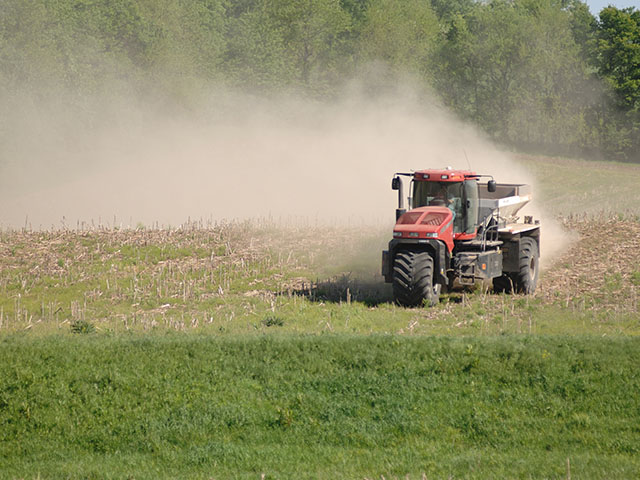Watch Your Crop K Applications
Too Much Potassium Can Sometimes Ding Corn, Soybean Yields
ROCKVILLE, Md. (DTN) -- North Dakota State University Extension soil specialist Dave Franzen wasn't looking for a problem when he set up a field study on potassium in 2014.
But he found one.
During the experiment, initiated to help farmers correct potassium levels in soils depleted by the growing amount of corn and soybean acreage in North Dakota, the scientist noticed something surprising.
Too much potassium, it turned out, was almost as bad as too little.
In multiple sites, corn yields decreased significantly when more than 200 lbs of potassium (in the form of potassium chloride 0-0-60) was added to the field. "It was kind of astonishing," Franzen recalled, as he summed up his research for attendees of the University of Missouri's virtual Crop Management Conference on Tuesday. "We thought it was a fluke, but I've just kept on seeing it and I don't think it's a fluke."
P[L1] D[0x0] M[300x250] OOP[F] ADUNIT[] T[]
When Franzen went on to scrutinize the economic return of potassium applications, he found the tipping point was even lower for North Dakota growers, with profits maxing out at 140 lbs of potassium (0-0-60), based on $3 corn and 20 cents/pound fertilizer costs.
As a result of his research, North Dakota State University has now published formal recommendations for the state's corn farmers to cap 0-0-60 potassium applications at 200 lbs (which translates to 120 lbs of potassium oxide, or K2O), Franzen said. "The reason we put on fertilizer is to make money, so why put on these higher rates if they aren't making us money?" he said.
While scientists haven't completely confirmed why potassium rates might sometimes ding yields, chloride toxicity might be at play, said Dan Kaiser, a University of Minnesota soil scientist who presented alongside Franzen.
Kaiser hasn't seen the same corn yield drop-offs in Minnesota from potassium applications, but he has seen situations where the application of potash decreased yields in soybean fields, which are more sensitive to chloride in the soil. He currently suggests growers limit their potash application ahead of soybean to around 100 lbs of potash per acre directly ahead of the soybean crop if a soil tests show medium or higher potassium levels.
Shaun Casteel, a soybean and small grains agronomist at Purdue University, reported similar effects from studies in Indiana where untreated soybean fields sometimes significantly out-yielded fields with 60 to 120 lbs of added potassium (K2O) near planting time.
"That was in fields with adequate soil test levels of potassium," Casteel noted. "We didn't see yield suppression in fields with very low potassium."
Casteel is recommending that growers in corn-soybean rotations move away from adding high rates of potassium directly before soybean planting. "I'd rather have growers adding potassium ahead of their corn crop, which should give them high enough levels that they can just use soil potassium for the following year's soybeans," he said.
To see more from the MU Crop Conference this week, see the website here: https://web.cvent.com/….
Emily Unglesbee can be reached at Emily.unglesbee@dtn.com.
Follow her on Twitter @Emily_Unglesbee
(c) Copyright 2020 DTN, LLC. All rights reserved.






